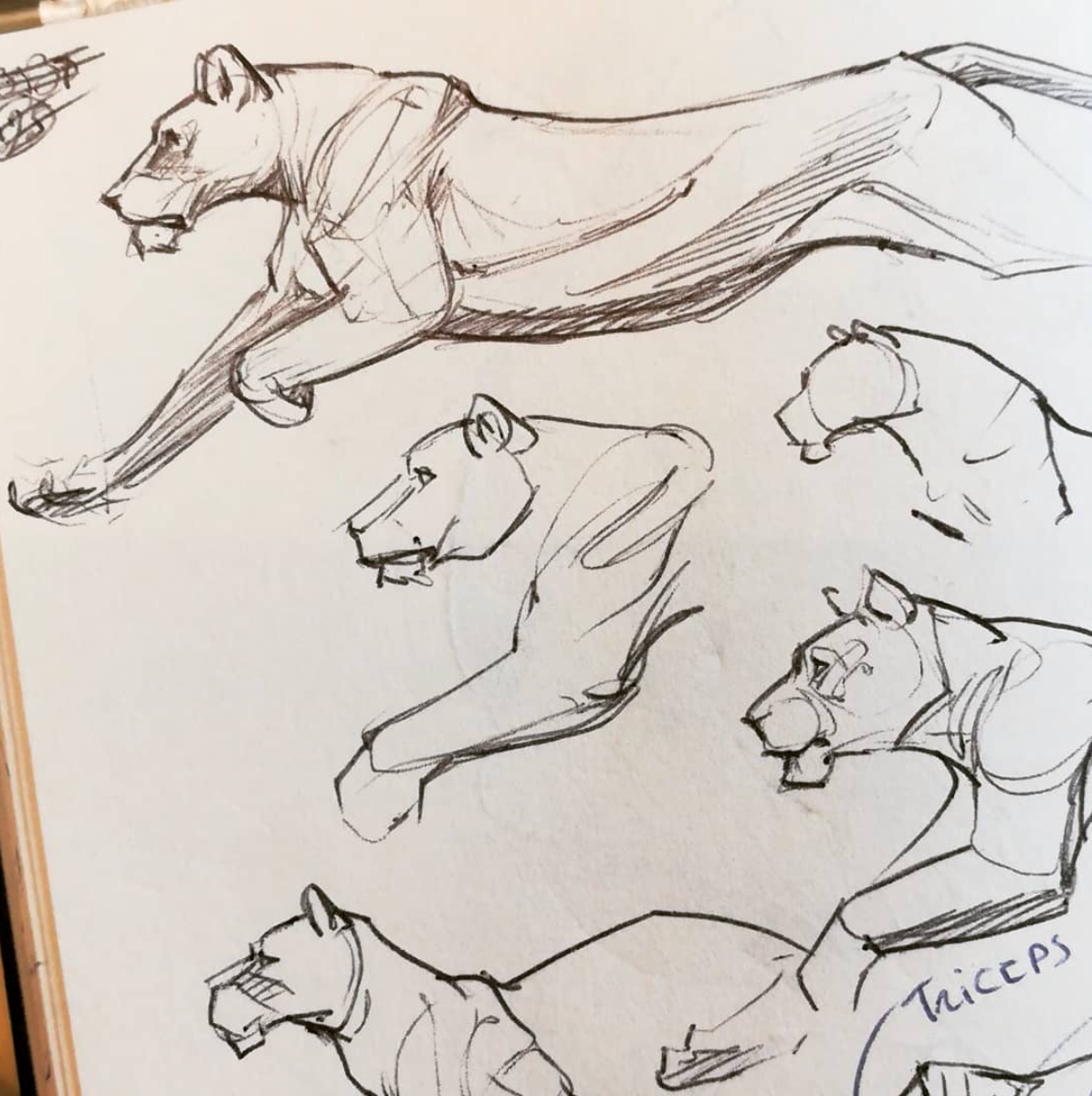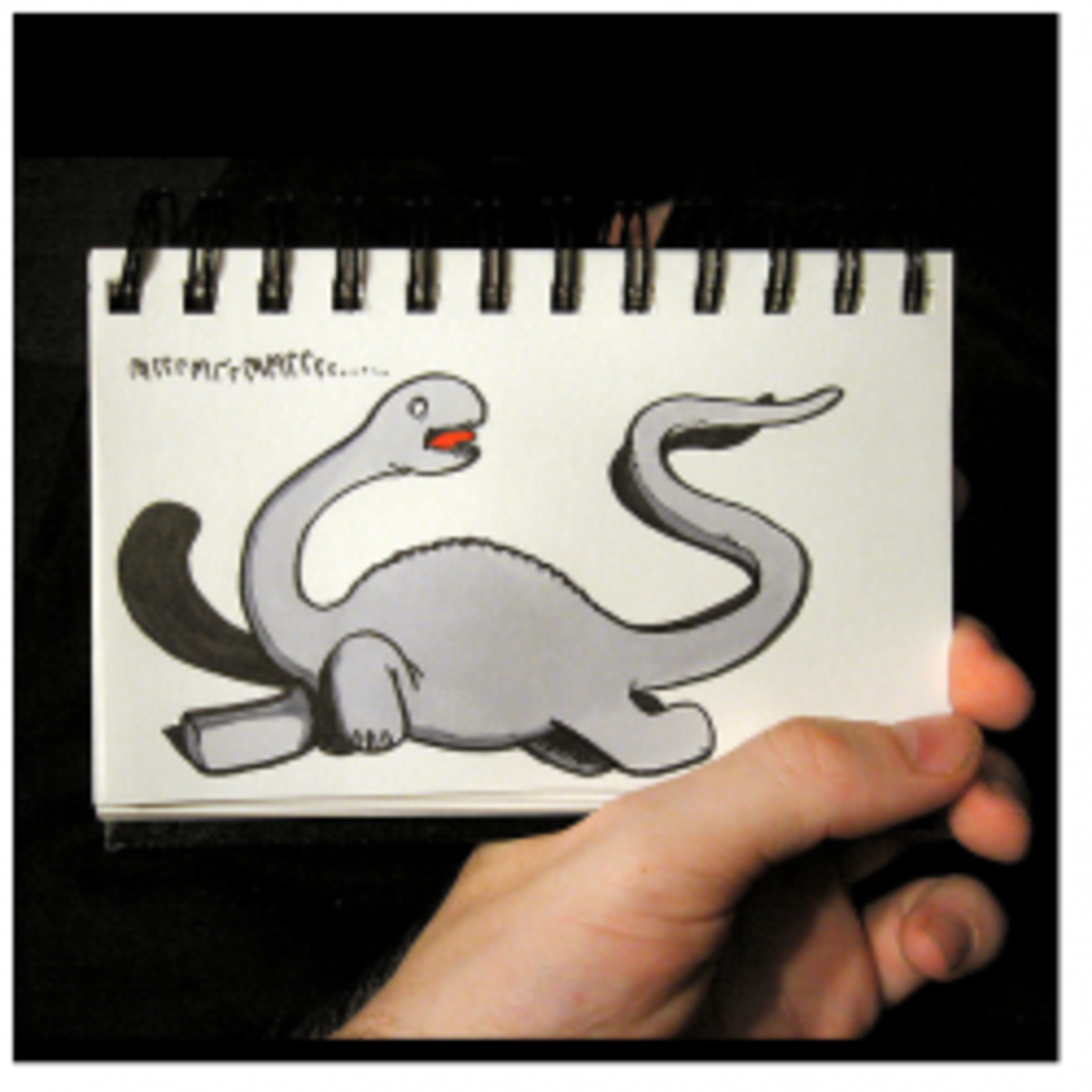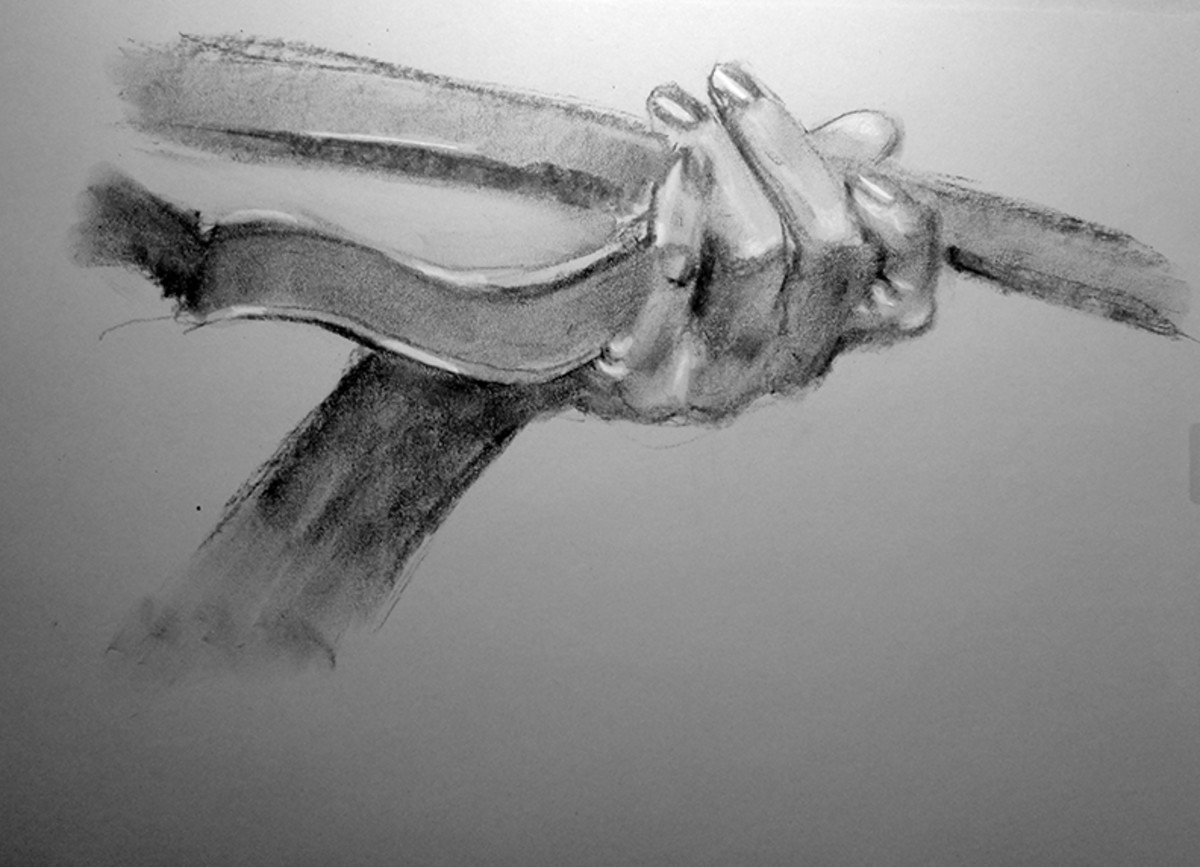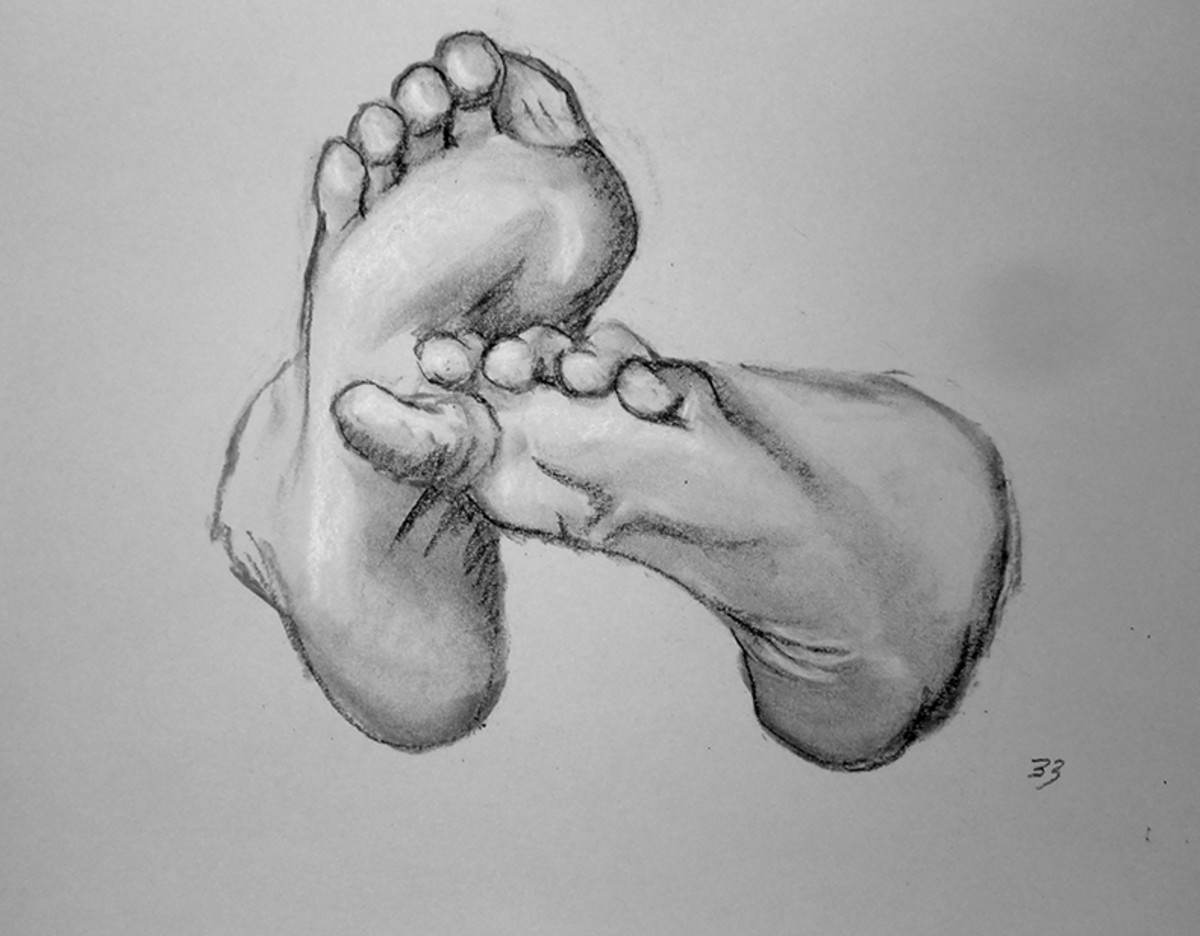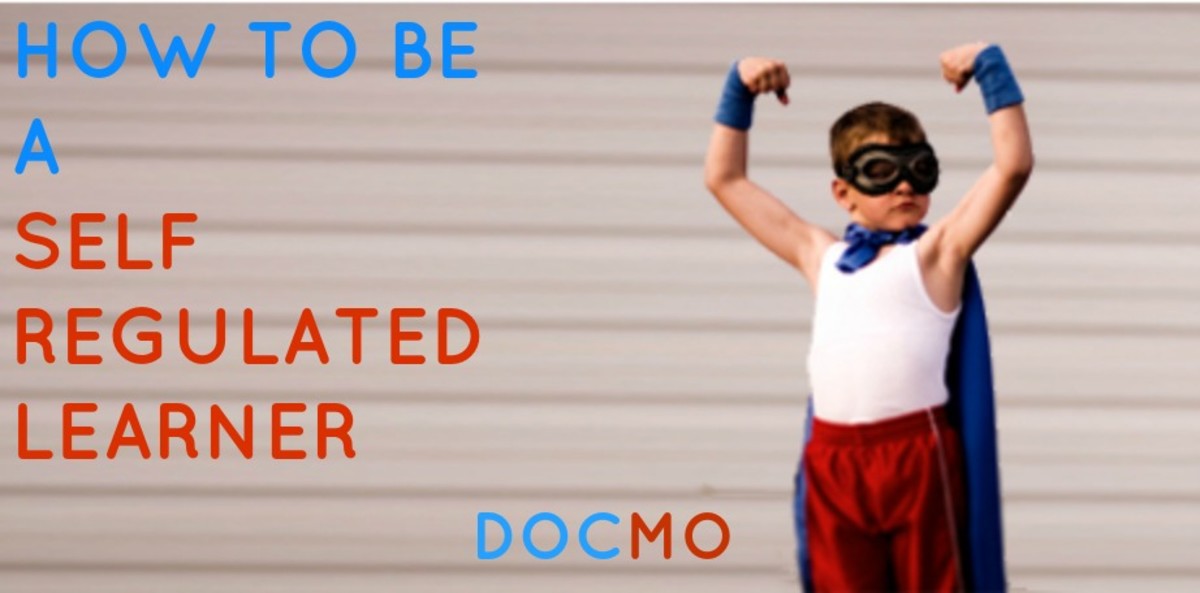How to Become A Self Taught Artist
Stop Believing You Can't.
The biggest difference between someone who can't draw and someone who can draw well enough to call themselves an Artist is that the Artist knows he or she can do it. Trusts that the next time they pick up a brush or a pencil, it'll do what they want. The way to get that is experience -- hours and days and weeks and years of it.
Which means starting with some pretty awful beginner drawings.
Inspired by this Hub from pgrundy: http://hubpages.com/hub/Ten-Things-To-Do-When-You-Cant-Find-Work I decided to go into a bit more detail on how an Unemployed Adult can turn him or herself into a working artist bringing in real money and building on that to create a good high-paying career that will never really vanish. Artwork is as old as humanity. The skill of being able to draw representational art will never be eliminated by technology.
Instead, technology just enhances what the artist can do and even more tricks of the trade are available to today's artists than ever before in history. We've got more colors, more choices of mediums, more scaling and sketching techniques. We've got photography to snap a reference shot of a good scene or a wiggling child and draw it at leisure from something that sits still before the light changes or the kid yawns.
And people still love it.
The miracle of the digital camera with its infinite virtual film is taken for granted. Everyone snaps phone camera shots or has some sort of camera device, and you can get them for $5 at the little independent cheap electronics shops in poor neighborhoods. Go used and you can get even cheaper for those little keychain ones. Granted you need a computer to get the images on it but getting a computer is fast becoming something as essential as having a phone. Maybe more so. I hardly ever use the phone but I use the computer constantly.
If you're unemployed, do not get rid of your computer because that's your source of jobs, side work and art instruction. It's the gateway to the biggest freebie-fest of all, the Internet.
So this article is predicated on the idea that you have at least got access to a computer at your local library and can get to it now and then. Since you're drawing by hand, you can get printouts or make notes of classwork and then go off and do it offline.
The thing you've got if you're unemployed is time. Lots and lots and lots of time. What it takes to draw well and accurately is practice -- lots and lots of practice that takes time. So if you start scribbling and doodling and drawing with whatever you've got at hand all the time -- printer paper, the backs of physical spam junk mail, paper grocery bags, you name it -- then you'll build up a habit of sketching and be able to build on that to doing good art on better materials that people will actually give you some money for it.
Eventually, they will give you a lot of money for it.
Transform Yourself

Draw what's right in front of you. Lots.
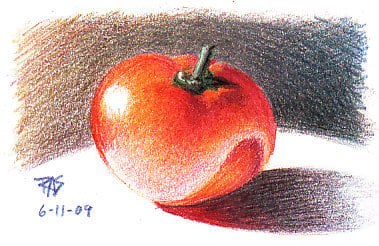
The First Ones Don't Count...
One of the worst things that blocks people from learning to draw is the fear of being laughed at for drawing badly. IE, drawing like someone who doesn't know how. There's a whole mythos of Talent in this culture. People feel free to criticize in the nastiest ways when anyone dares to sing or dance or draw or otherwise express themselves. On top of that, the criticism is often personal and has nothing to do with your skills.
It can be crushing to spend ten or twelve hours drawing a cute fuzzy kitten only to have someone dismiss that as too trite and boring. Forget them. Learn to ignore the pretentious. People who pick on your choice of subject are getting personal in a way that you'll never be able to please them unless you accidentally did once and now they push you to constantly do only the type of art they like.
Don't obey them.
Art comes from the heart. You draw what you like, whether you know how yet or not. Because if you draw what you care most about, again and again, you'll have to look at it every time. You'll see the mistakes in the last drawing and get it better. Do it a dozen times and it'll start looking really good.
You can get there faster too if you start getting books on how to draw. Most of them actually cover pretty much the same material, the biggest differences are in how it's presented, how far it goes, the author's style and how easy the step by step examples are. I own dozens of them and they're all good. One set that I'd recommend to anyone who's short on funds is a set of three or four books by illustrator Jack Hamm.
Drawing the Head and Figure, How to Draw Animals, Drawing Scenery: Landscapes and Seascapes are all good complete drawing books. Take them together and you've spent about $30 on Dover books to get a good course in illustration that covers everything but color. Get a book on color theory (or take one out of the library) or any watercolor book and you've got color to add to the Jack Hamm stuff. You can also round it out with Cartooning the Head and Figure which is also helpful on figures and action in a different style.
Or you can start with that one if you like being funny, because a good caroonist doesn't need to draw brilliantly. Only consistently and have good gags. If you can sketch anything and people can tell what it is at all, even with distortions, you can do cartoons -- learning the fine points of caricature gives you something that will be a good gig at any fair, art fair, mall, anywhere you can set up in public. It wasn't my style but I've known lots of caricaturists and none of them starve.
It becomes habit to be able to see and draw in whatever style you prefer.
It really will be the style of art you most like looking at. In the long run that's what your own personal style will become. You pay more attention to the art you like. You study how different artists got those effects more often. You learn the tricks -- hundreds and thousands of them. And then at some point other people you don't know are going "OMG you did that!"
Especially if you did it right in front of them with something fast like charcoal or pastels.
Start with the cheapest scrounged materials for practice, but also get a sketchbook that has actual acid-free drawing paper. Even early on you can wind up creating something beautiful that'd be worth some money -- and it's not fair to the buyer if it's on something like an index card that'll yellow in a couple of years. They'll remember you. They may want to buy more art from you. But not if it browned in a year and left them feeling cheated or they threw it out so they're not reminded that they like your art.
Books do take money though. There's a free alternative to the Jack Hamm books that's comprehensive and deep, it's as good as any college course and better than many. http://www.wetcanvas.com is a website set up by F&W Publications, which owns North Light Books and several good artist magazines -- Watercolor Magic, The Artist's Magazine and The Pastel Journal.
Because it's run by a publisher, they're very strict against flaming. The classrooms are incredible -- often authors of good art books hold classes online there at every level. It's a lot like art college but free. As a community it's tremendously warm and supportive.
The difference between a Talented Beginner and an untalented one is that the Talented beginner wants to do it.
That's it. That's the whole secret of Talent. If you take a ballpoint and a memo pad and draw something that's in your house on every page, by the time you've used up the pad (especially both sides) you will start drawing a lot better than the person who did one sketch in a good acid free sketchbook with a good pencil that cost $1 or $2 and then got discouraged because the first one didn't actually look like that coffee cup at all. Do coffee cups. Do tomatoes from the kitchen. Do various unmoving things.
Do the exercises in the course at WetCanvas. They have it set up so that you need to take all the 101 classes in order to get to the 102 ones, and some of the 101 ones are tough interesting subjects like folds in cloth or shadows on faces and things. Go slow through those 101 classes. Each one has moderators and volunteers helping the newest beginners work through them. You will get suggestions, positive supportive critique. It is vital to find out what you did right because very often that's exactly what new artists get the most self conscious about.
And you will have genuine social support in the drawing and painting forums by subject or medium. The community is very good for that. It gets warm and supportive, you can get help with anything that goes wrong in a drawing and you'll improve faster than you ever thought you could as you understand the tricks. They really are tricks. Art is a matter of a lot of separate skills most of which involve learning to see.
What that means is learning to pay attention to what you see. We get inundated by massive amounts of information every time we open our eyes. Any human being to stay sane filters what's coming in so that you don't get distracted by the color and shape of the fire hydrant while you're looking at a crowd trying to find the face of someone you recognize.
Artists train into changing that filter so that when you look at anything with the intent of drawing it, you see a lot more details about it and a lot more things about it of interest only to artists. If you look at the face of someone you love, it's beautiful. Especially if they're in a good mood.
If you look at the face of someone ugly after you've learned how to draw you will actually see beauty in it because everything gets understandable. Their entire personality comes through. You'll understand them in deep ways from seeing what time and emotion has done to their features and there's also this awareness of how they'd look if you did them in charcoal with side lighting on tinted paper with just a few highlights of white Conte to dramatize them.
Everyone looks good in good light. Artists learn to know good light as a skill and so anyone's portrait looks lots better than they see in the morning when they look in the bathroom mirror in rotten lighting that's usually as bad as drivers license photo lighting.
It's not easy to learn.
What art becomes is satisfying to learn and extremely relaxing. It builds confidence because as you get used to doing a little better every time, progress is cumulative. Human beings are wired to work hard at something important (to them) and try repeatedly in sustained effort, then get some social recognition for their efforts.
This is also why people who can draw realistically will always make a good living, because most people are not that interested in learning to do it.
The big key to managing your time is to accept that you're going to do a lot of crummy drawings -- and then do them fast, improve on them, get used to patting yourself on the back for small successes. Try to draw something every day. Or lots of somethings if you're unemployed, maybe fill a sketchbook page on a big sketchbook. I bought the Leonardo da Vinci Sketchbook on a whim when it went on saie and in the essay on Leonardo's life, the author suggested that anyone who wants to draw that well should go through a sketchbook a month. And this was in a 100 page sketchbook!
It costs under ten dollars online for a good spiral bound sketchbook, letter size, with hard covers. This is the kind I like best because they lay flat to scan. Then I can put my latest drawings online and get applause. Getting social approval for your improvement is vital to motivating yourself to keep learning. People will give compliments much sooner than they'll give you money, and the point they give you money can happen randomly after they know you and have seen you post it in your blog.
You're also making a social adjustment.
From the point you decide to do this, don't just say "I want to be an artist."
Redefine your identity. "I am an art student."
Huge difference. You just told the world you're serious about it. You don't need to pay to go to college to call yourself a student, you're taking online classes and learning the real skill, right?
This will not set people up to expect you to draw like Leonardo your first time out. It will set them up to applaud when you proudly post a drawing of three cubes and a ball done in charcoal (it scans better than pencil!) and once you get the perspective class under your belt they will be amazed and impressed.
It also makes a bridge between "I am an artist" and "I can't draw to save my life."
One that sets up realistic expectations -- for yourself as well as those around you. Don't get perfectionist. If your latest drawings are better than the last ones, be proud of that. Art has so many litlte sub skills that new discoveries come along almost daily and if you date your work, you can see how far you've come from "people who can't draw" to "people who never need to worry about being broke again unless they're paralyzed."
Pretty early on you'll discover something else. One or two things will come so easy from your liking them enough to do them dozens and hundreds of times that it startles you to draw something else and it comes out cruddy like you learned nothing. I got very good at drawing rats and rodents as a child because I had a pet rat and the family had pet mice. So I was constantly looking at the mice and my rat and drawing him in ink. I could not do cats to save my life because there were no cats around, a parent was allergic.
Later on because I love cats, I drew them badly enough times to start getting good at Sleeping Cats and eventually at some of the quieter Awake Cat poses like Brick Position, now I'm working toward bouncing leaping running cats.
I'm not much good at dogs but we got two big dogs last year and I'm watching them, studying their build. I'll get better at dogs as time goes by.
Meanwhile anything I've got right in front of me that doesn't move is fair game, I'll probably draw it well because it's not moving. This is where to start for beginners because if you can keep checking the real thing while you're drawing, erase your mistakes and shade in everything you notice about the real thing, it gets to look good.
Many skilled artists get this thing of people saying "Draw a sailboat" at a party where there isn't even a photo of a harbor on the wall. Yet most realists will be able to draw pretty much anything from a photo reference or looking at the real thing. Getting to the point of the party trick of sailboat off the top of your head is a skill so advanced that many artists who make thousands of dollars a painting couldn't do it -- and would get stumped on things that aren't in their usual repertory.
Yet artists who specialize make a better living.
So draw your favorite things. The ones that are fun to draw. The things you like in pictures. Trust yourself that you did grow up in the same culture as your clients and that there's a huge fandom of people who love the things you do in about the same ways you do. Of course if your thing is portraits, that's the irresistible hook -- no one can really resist good drawings of their loved ones because the more accurate they are, the more lovable they are.
Favorite places too. Wherever you live, someone else thinks of it as scenic and there may be some tourism. If there isn't and it's industrial ugliness, there's a whole lot of appreciation for gritty realism of industrial subjects.
And you will find a lot of serious artists cheerfully raving over the fun of drawing rusted metal -- it is one of those big kick fun subjects to learn to convey well. That's one of the best perks of the job -- the world becomes beautiful.
Someone else sees an ugly pile of junk on the street, an artist sees half a dozen cool objects to take home to do still lifes with and walks around and sees stunning beauty -- and can paint that. Artists never miss seeing the colors on an oil slick or the interesting cracks on a rock.
Learning to filter what you see as artists do will make everything in the world more beautiful. You learn to appreciate reality in ways that most people don't, and that leads to a pleasanter life. There's a reason a lot of people do it to reduce stress.
Once you setlte down to work on it, you are in control of that little world on the page. It's not overwhelming, it's something you made and there's an instinct level of satisfaction at deciding to do something complex and difficult, then mastering it. Those daily accomplishments mount up and help counterbalance all the daily disappointments and minor emotional injuries most people put up with constantly and don't even think about.
From there you can either pursue art part time and keep looking for an actual job, or look at the dozens of different types of ways artists make a living. The core skill is being able to draw what you're looking at in a way that makes sense to other people, that can be recognized and mean something. With that you could go into design, web design, advertising, street art -- this works at any level of skill above beginner and demands recognizable subjects (even if you can only do one type of thing well, it's good enough for street art as long as that one thing is popular locally) or gallery fine art careers, illustration careers, graphic novels -- lots of different career directions.
Most of which open up as you're learning and meet people who do them. All these different careers have different lifestyles. That's the big thing to think about in choosing -- what you most like to draw, where and how you like to draw, whether you like drawing in front of other people or prefer to get it done alone and then show off.
When you're ready for color, or if you really like color and it helps motivate you, get good artist grade supplies. For one thing, you can luck and do the best thing you've ever done and someone could make an offer for it, in which case it's fair to them to use archival materials so they still have it five years later when they want you to do their new puppy. For another, it's a way of motivating yourself. Art supplies pay for themselves for the skilled.
That is the first level of economic success - the point where doing art is way cheaper than doing videogames or any other hobby because you sell a few pieces on eBay or whatever and it paid for all your materials. From there it always goes up depending on how much time and work you put into it.
You don't always need a lot of colors. It depends on the medium -- sometimes three or four tubes of paint and one or two good brushes is enough for watercolor or oils. Or you can get into dry mediums and start looking at big sets of pastels or colored pencils and constantly build on that collection -- but if buying a new color motivates you to keep going, then do it. Just try to keep a balance where it's paying for itself even if you have to sell charcoal sketches to get more pastels.
The ins and outs of various mediums are different. Most students and hobbyists like trying a lot of different ones. I'm like that. Many serious professionals settle on one type of thing -- pastel landscapes or oil portraits or watercolor cats -- and then will kit up in that medium to either the color-mad palette (got to have every pigment ever made) or a favorite limited palette developed by finding out what emptied out fastest while learning.
Hint: if you use color at all, get the big tube of Ultramarine Blue. Skies are large and blue goes into almost everything, so you'll use up lots of blue and it wears out fastest in any watercolor set by sheer volume. Also, monochrome blue painting can look good by itself. You will use that one up, it's one of the most versatile blues.
I hope this rant has helped you see what's involved in taking up art. If you're unemployed with time on your hands, spending some of it learning to draw is an investment in a very real future. If you always wanted to be able to draw, now is a good time to learn -- when you can get master level classes for free or cheap online and there are more materials available and easier marketing available than has ever existed before.
Many, many serious fine artists bulid online careers and go right past galleries. They have webpages, they do various things to get traffic, they sell art on commission or do daily art and sell most of the daily paintings because a number of people follow the daily art blog. That aspect of art careers is booming -- and one of the best things about that is that it really does not matter at all where you live if your business is online.
Or artists do use galleries and also sell online -- this is even more common. But most cities have a fair amount of art galleries and most people with higher incomes do get interested in art -- and prefer real art to cheap attractive prints because being able to have a good painting from a well known artist is a much better investment.
Once you get up into the high-reputation areas with art, you're literally creating investment opportunities. The prices on art skyrocket on pure social value as well as artistic merit (which mostly but doesn't always correlate) but real quality always soars up into that category eventually. Which can leave you with a long term career goal at any income level you choose to shoot for really -- understand the different types of careers and choose based on how you want to live.
Like all self employment it takes putting in enough hours. That is the biggest hurdle for any work at home opportunity. You have to give it the time and attention it needs in order to succeed at it -- first to get good enough to sell art, then to market the art once you're doing marketable art in at least one popular subject. So the little emotional perk of small daily successes is the most important motivator. That keeps you doing it when the thousands of dollars per painting level is far off and almost inconceivable.
The cool thing is that as you get closer, the more you start to understand the difference between the paintings that are worth that much and the equally colorful ones that aren't. Each level of understanding pushes you closer to that bracket. It's fun.
That's the big thing about it -- if you love doing it, then it's fun at all stages and you will eventually succeed. It really beats staring at the television feeling like a loser, though, so if you ever wanted it -- now's the time to start with a notepad, online classes and a free ballpoint.

